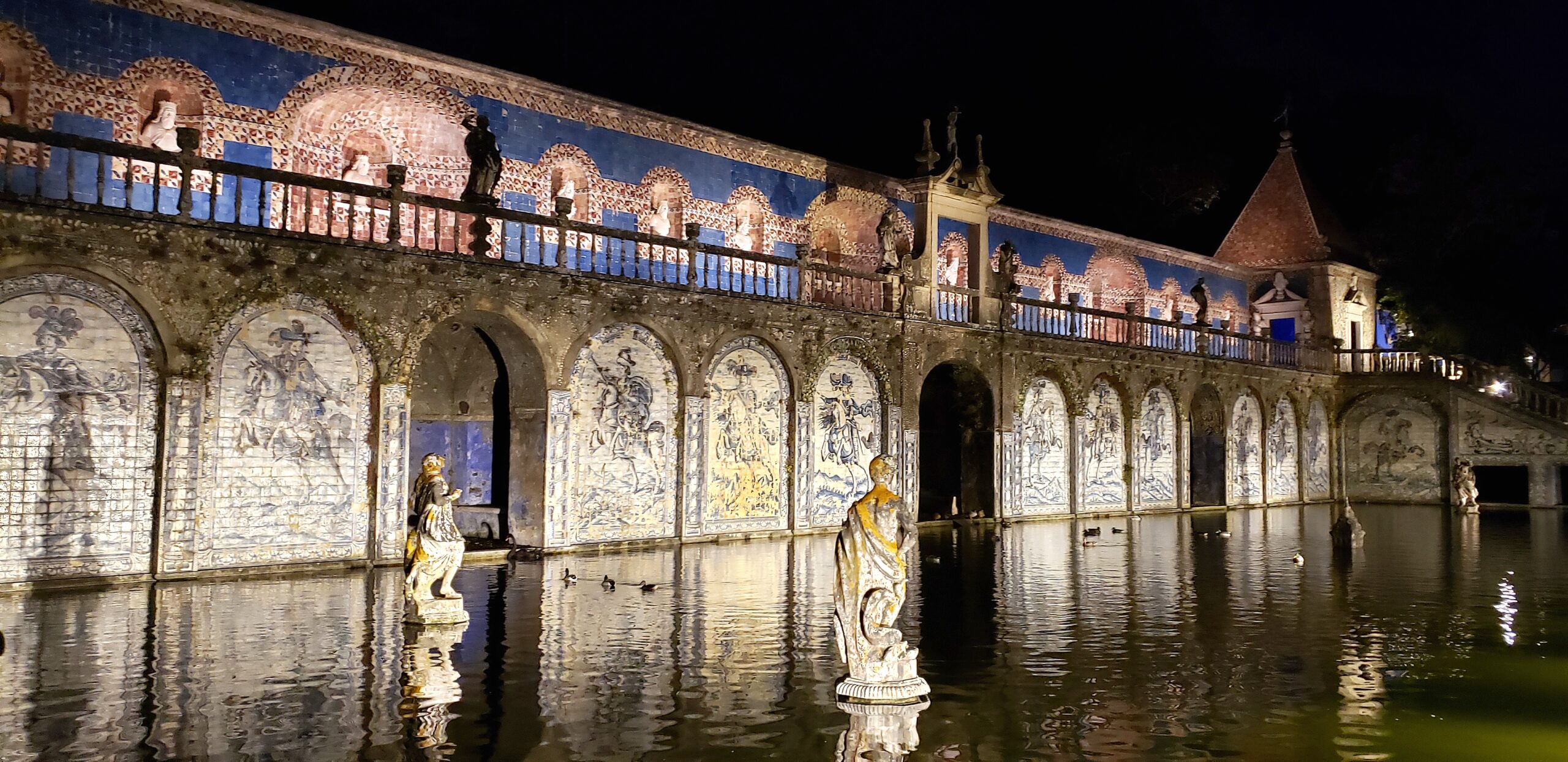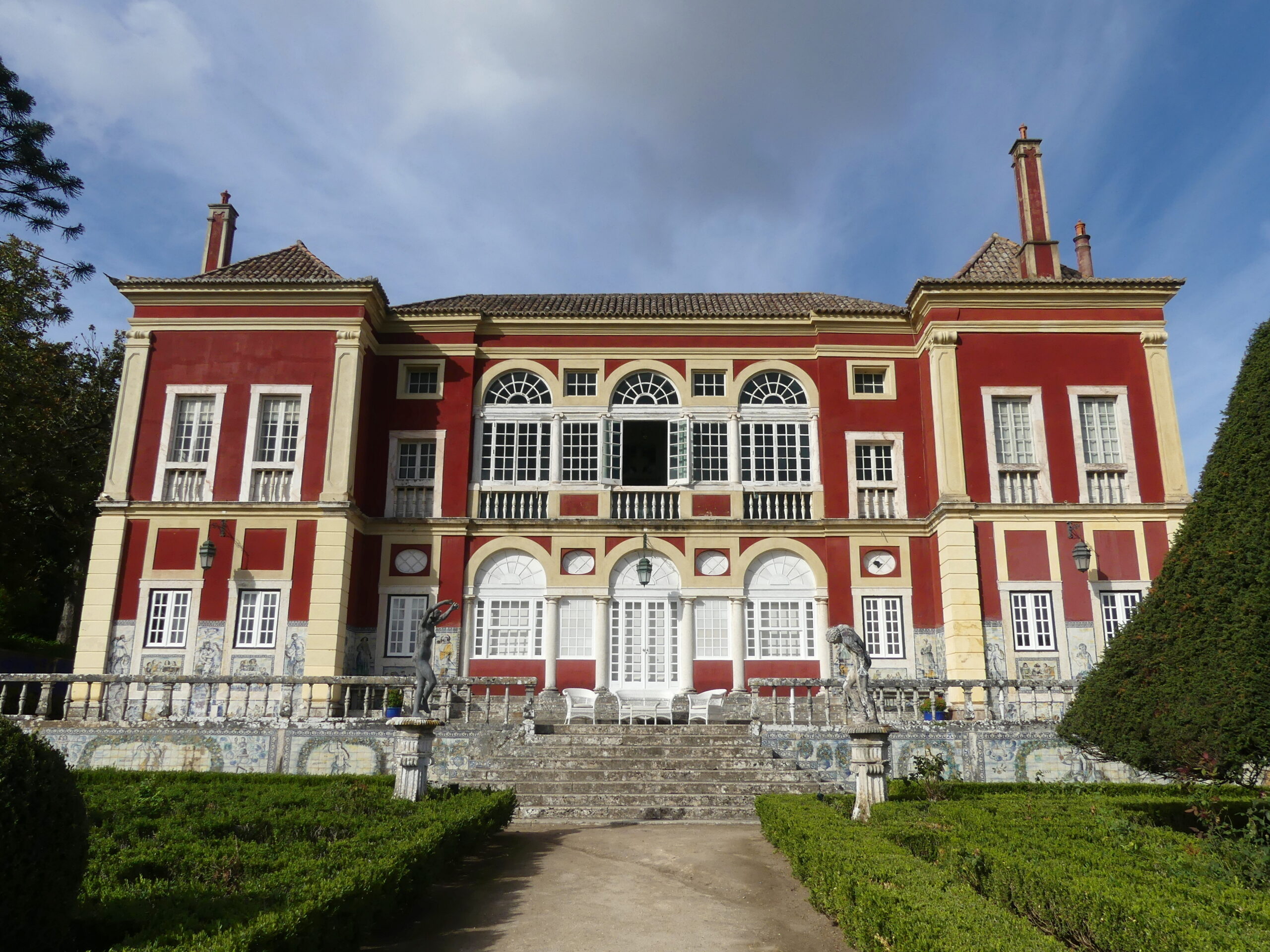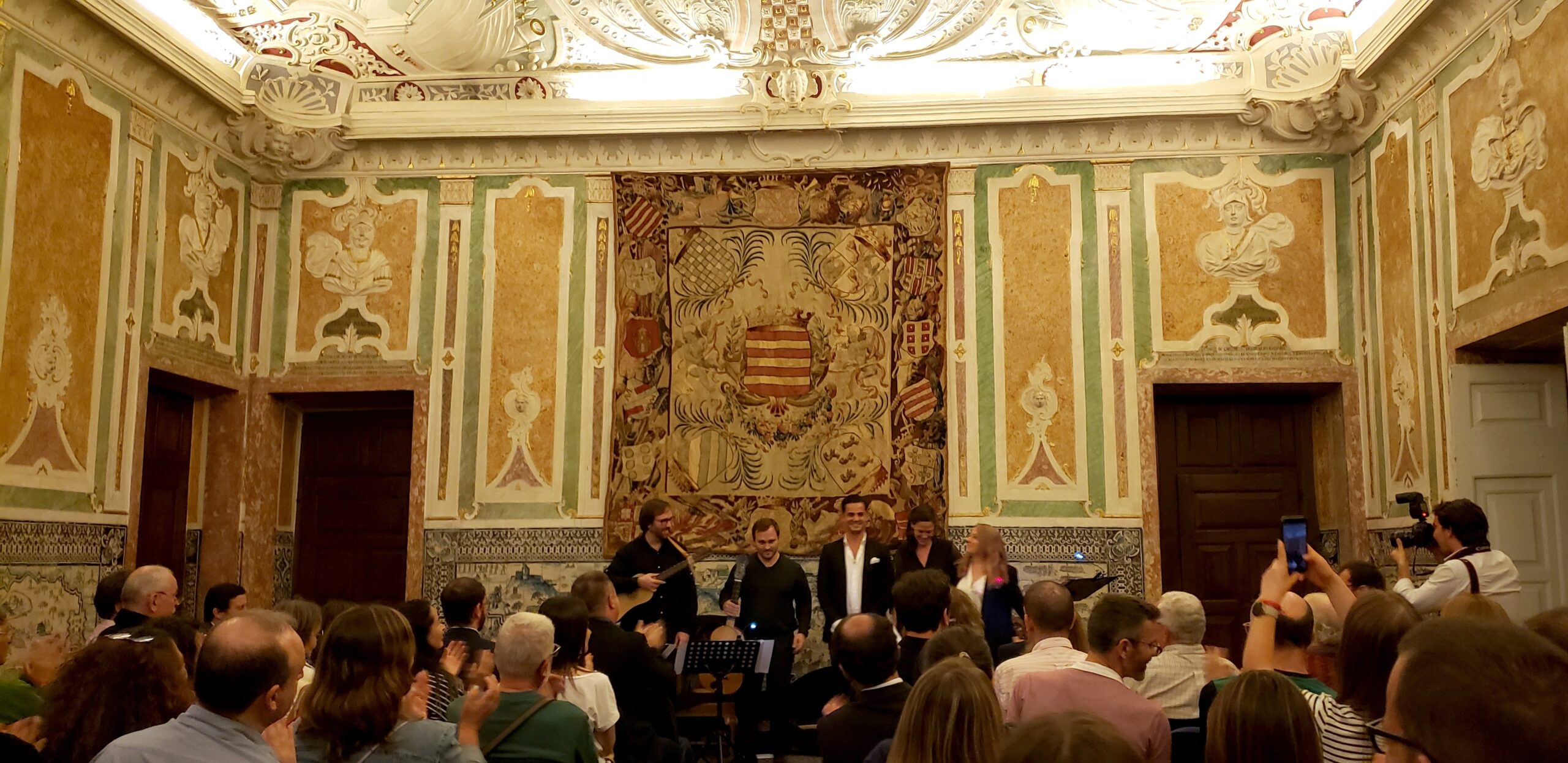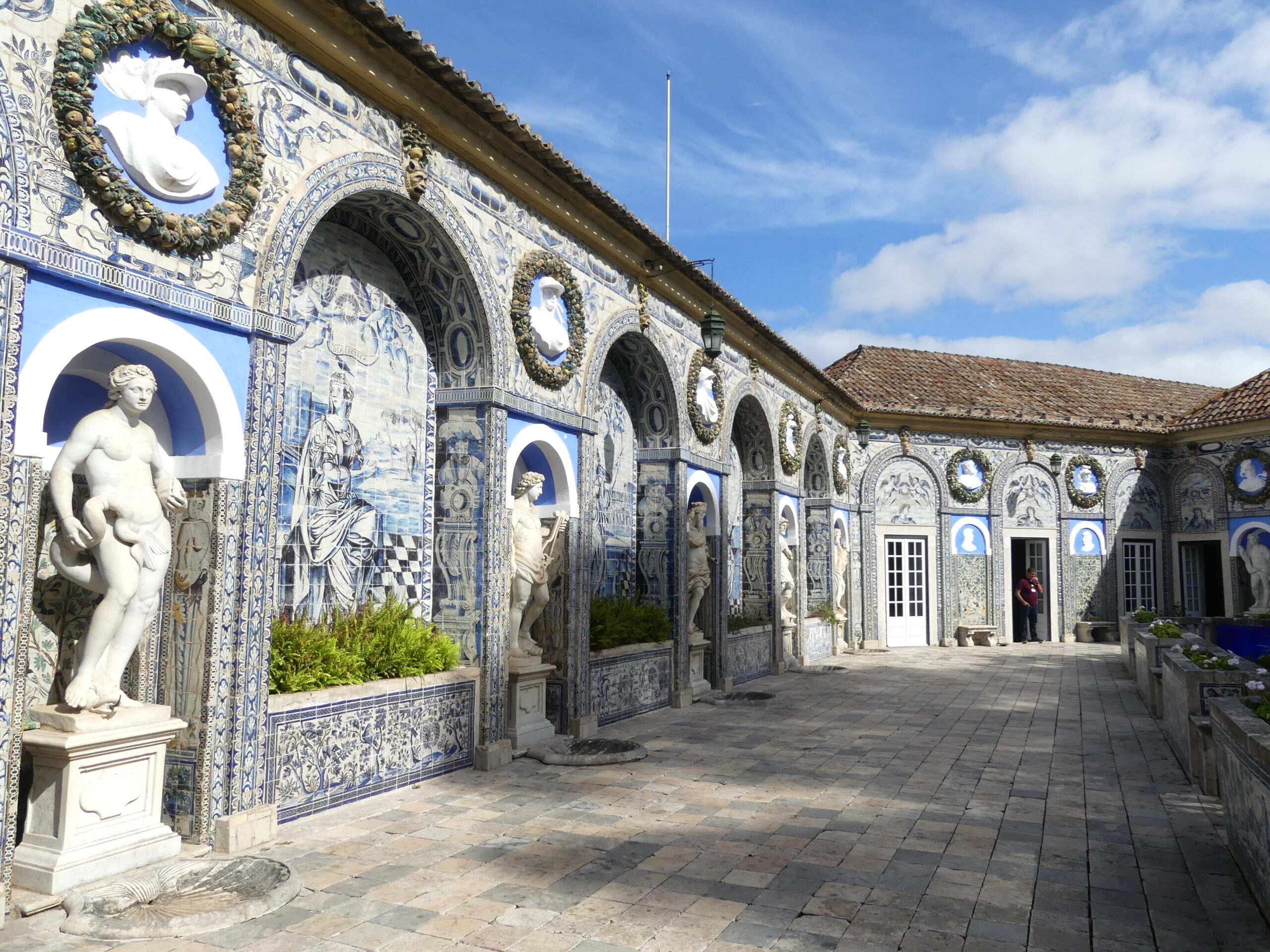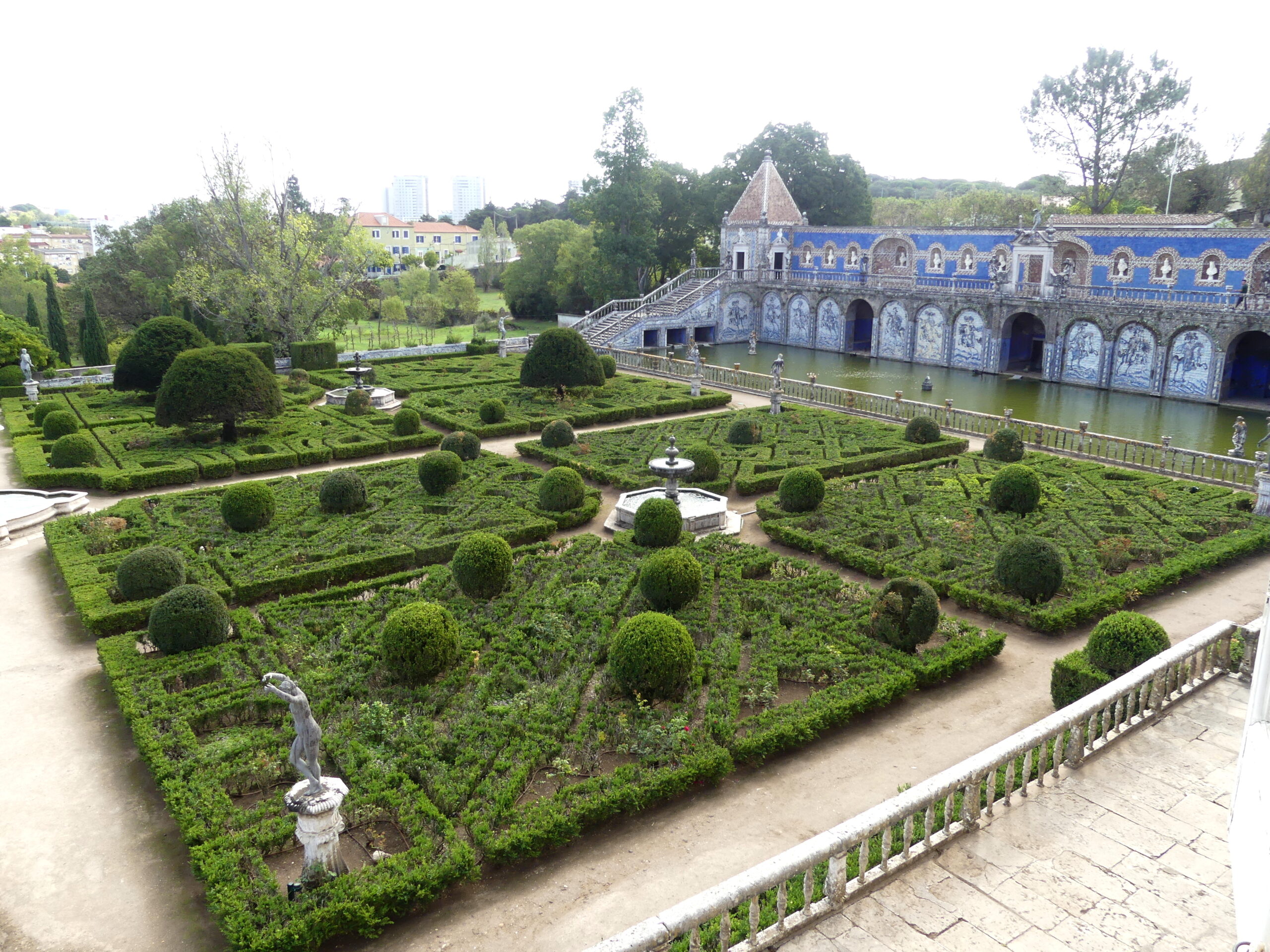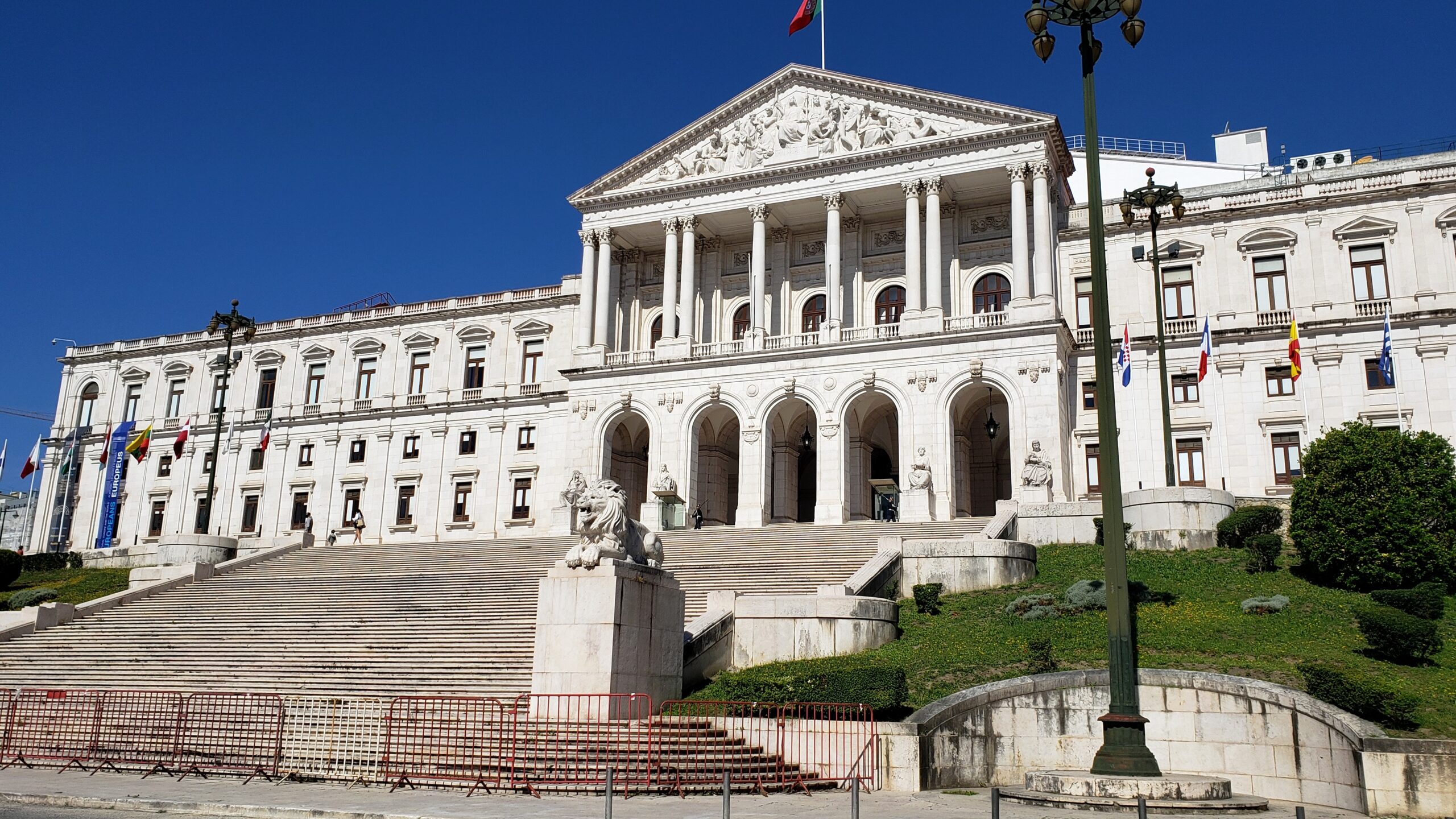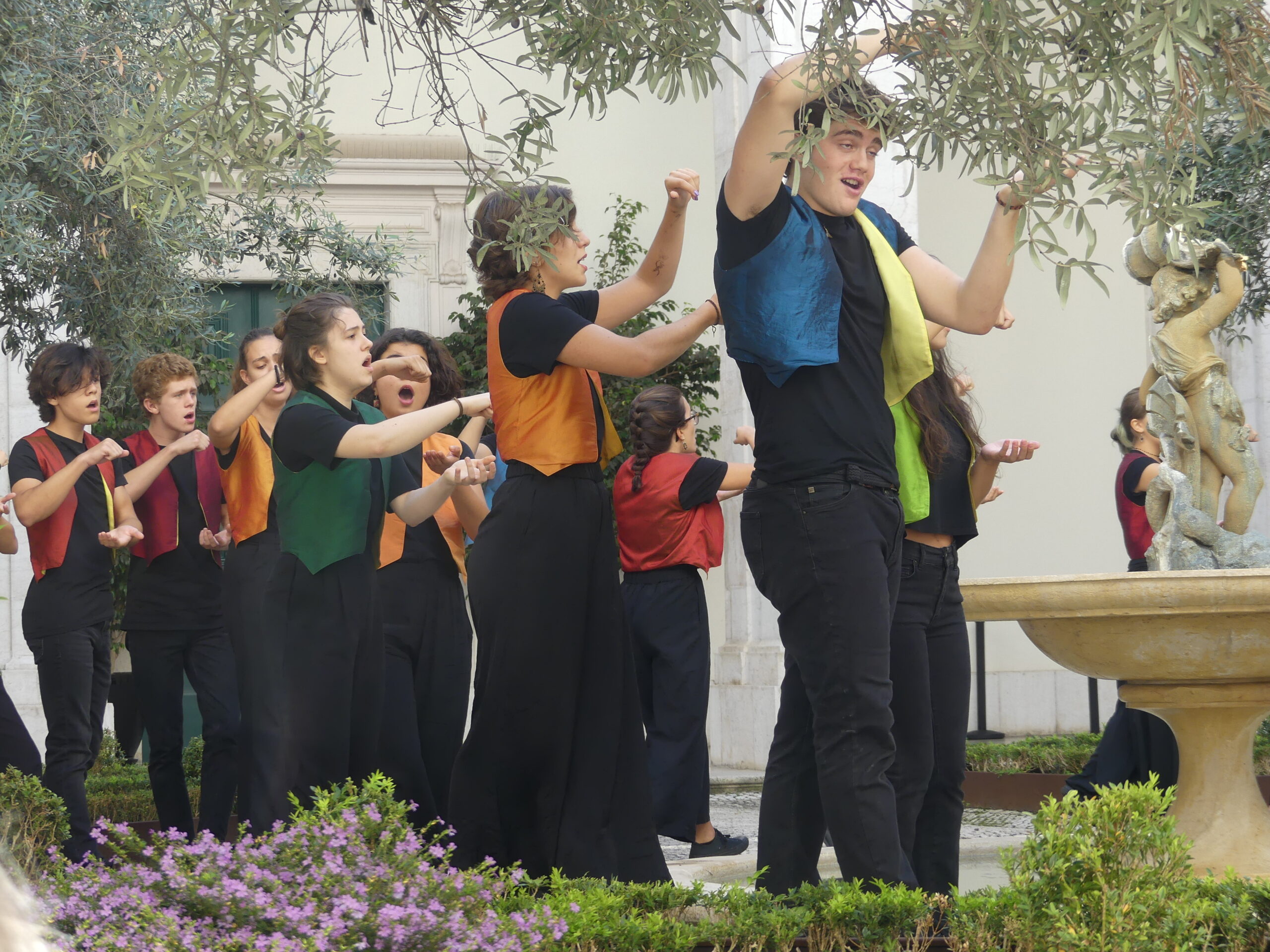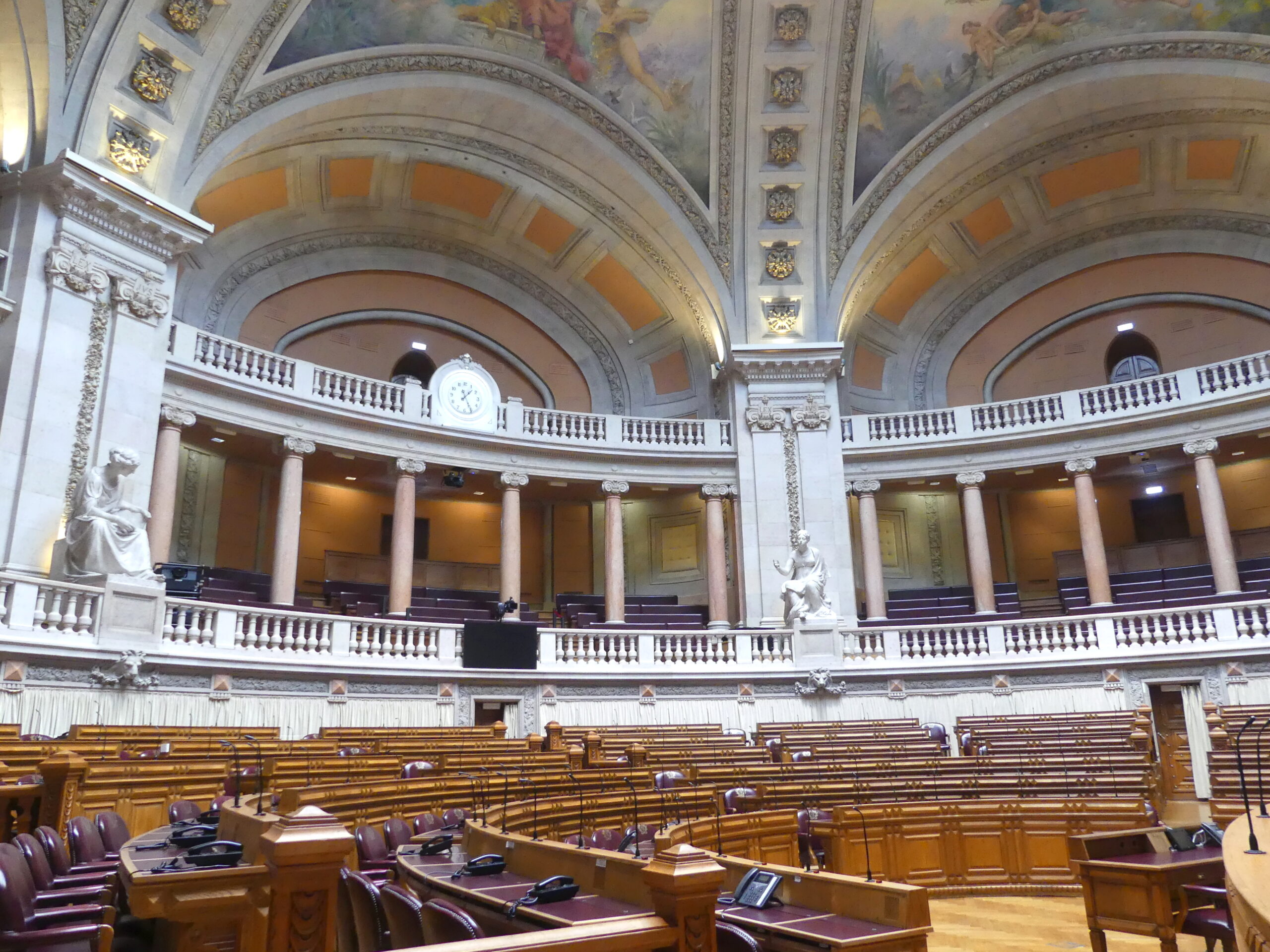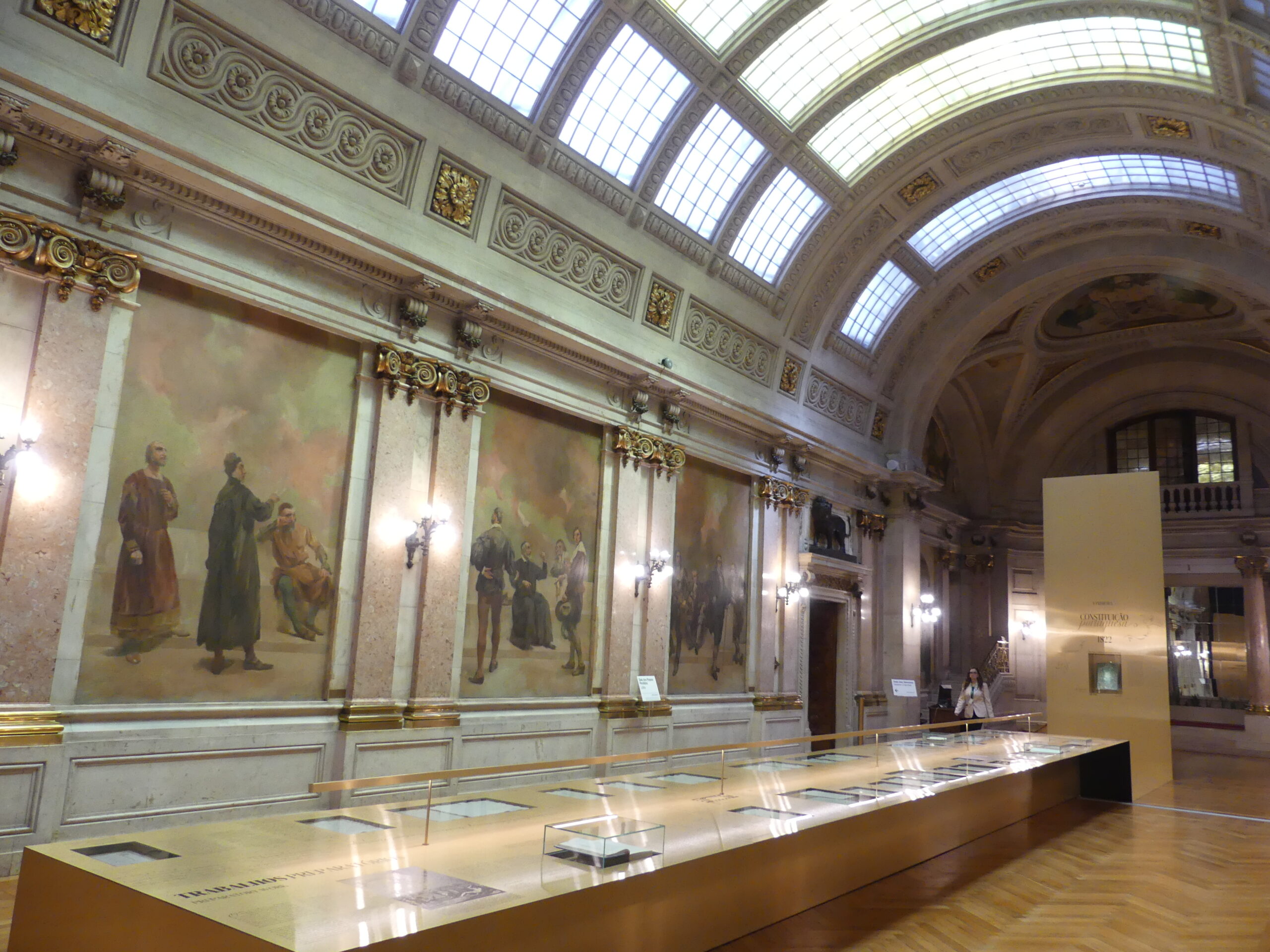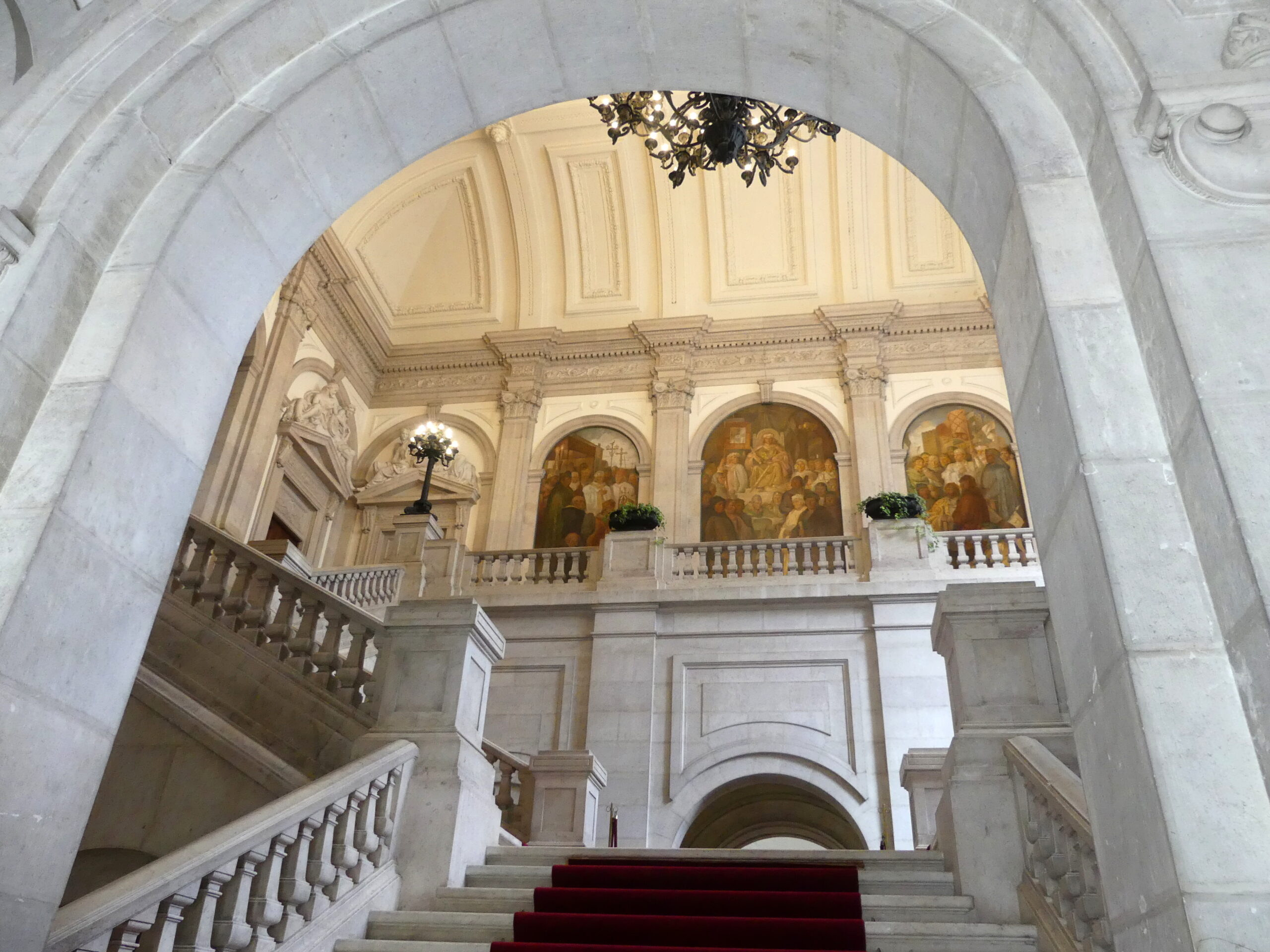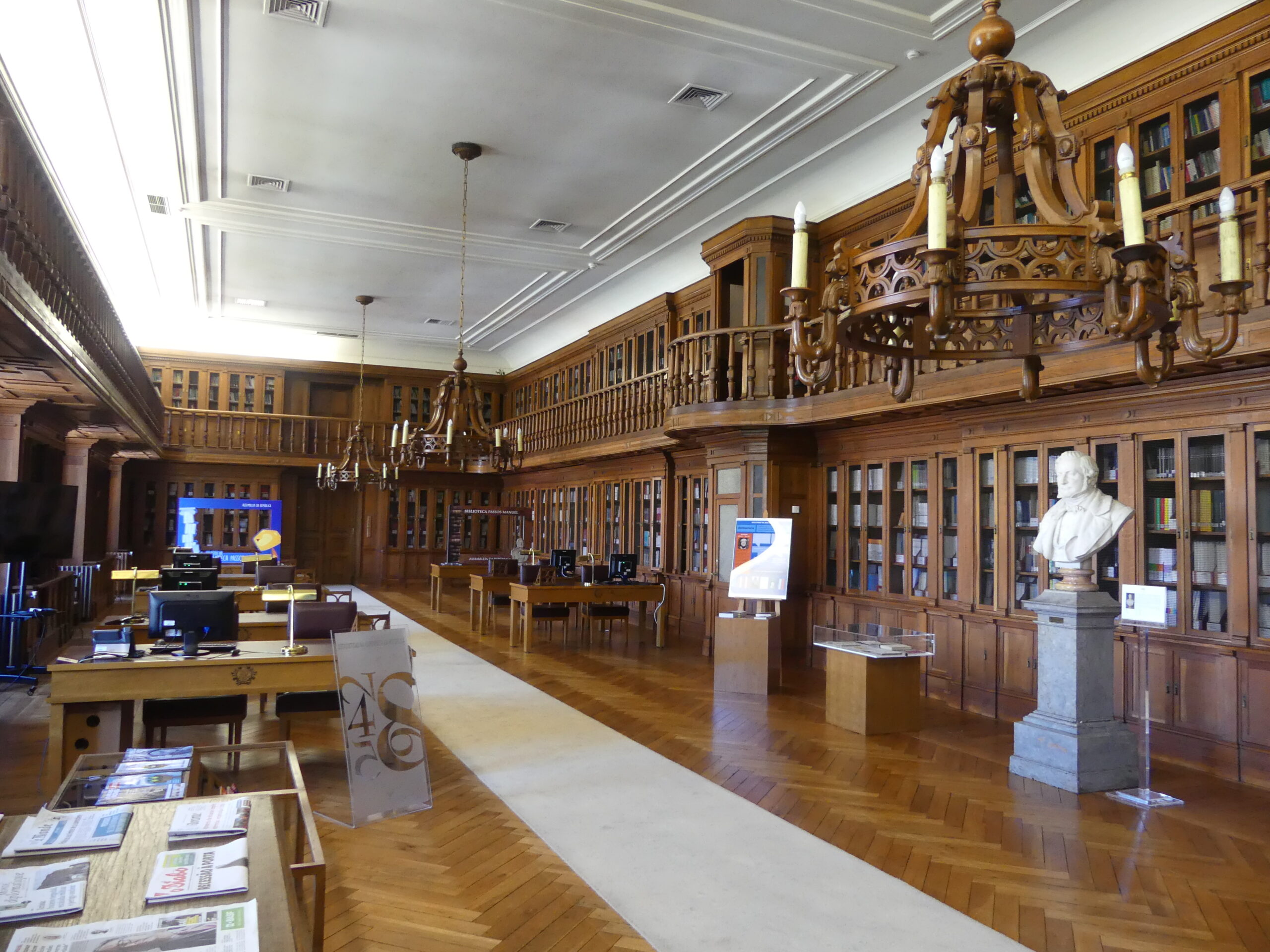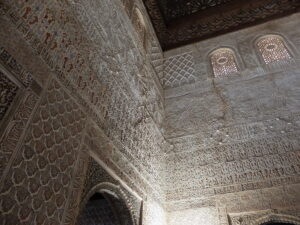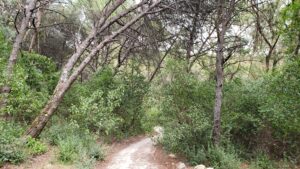In brief: Two palaces with origins in the 17th century made for a visually entertaining and historically fascinating celebration of Portuguese heritage in Lisbon.
One weekend across Portugal in September, citizens and tourists honored the patrimony – the cultural legacy – of the country, as hundreds of museums and historical sites welcomed them for free. We went to two palaces which we had admired many times, but never had the chance to visit. One was the 17th century Fronteira Palace, still occupied by the family of the original Marquis (currently #13). We had passed it often while hiking in Monsanto, the central hilltop park of Lisbon. The other was the Palace of São Bento, the seat of the legislative Assembly in Portugal, an imposing building that had seemed unapproachable as we journeyed past it, but turned out to be very open to the public, with a gracious staff. We too felt honored.
Fronteira Palace
Fronteira as seen from the garden: the elegant façade – trimmed with whimsical tiled pictures of nymphs, gods, and lounging courtiers – gives you a good idea why we always wondered about this building. It needs a lot of maintenance to keep fresh, not even counting various restoration projects, some of which were even active during the weekend.
The family still observes the custom set by an earlier Marquis that people can tour the house without barriers, though only with a guide. They do ask visitors to take no photos indoors. This hall upstairs was the setting for a charming concert of music performed at salons for the very early Marquises in the 18th century – songs filled with longing or puzzlement about love. So we could share with you the family busts on the walls, its crest on the tapestry, and a bit of the heraldic baroque ceiling in swirling stucco.
This patio on the upper level joins the original building toward the back of the photo, with the Masonic-themed family chapel and the newer building, invisible behind the camera. Those doors lead to the dining room and concert hall. An early Marquis set the decoration as a tribute to the classical version of the Liberal Arts. That’s a contemplative Dialectics near us on the left. Poetry is honored at the far end. In the middle, the figures representing Geometry and Arithmetic are hard at work on their sums. Statues of modestly draped gods and rondels of heroic figures complete the decoration.
Beyond this section of formal gardens is a semi-formal garden with contemporary design, and in another direction natural parkland still owned by the family. Along the margins of this garden are tiled scenes from the 18th century representing the months (we found all 12), the signs of the zodiac (check), and the four elements (check). When the panel for Fire was ruined, the family replaced it with a modern tribute by the renowned Portuguese artist Paula Rego. In the background on the top right is the garden’s most spectacular feature, a large duck pool (plus black swans) with impressive tiled walls.
Fronteira at night: The gardens were lit up in the evening highlighting, in particular, that impressive duck pond sprinkled with statuary. The two-level arcade behind the water celebrates the kings of Portugal along the upper tier and the older Marquises along the lower.
São Bento / Assembleia
The building is largely an early 20th century transformation of what was an old Benedictine monastery untll the brothers were exiled. Then it served wildly different purposes, as a hospice, prison, burial site, military academy and dump site. Finally, in the mid-19th century as Portugal settled into a Republic, the building was devoted to writing laws to govern the country.
Cloister: The former monastic cloister is now a quiet garden hemmed in by the sheer walls of the new building, with a small fountain in the center plus an array of plants and trees.
While we visited, the chorus of the University of Lisbon gave an energetic and splendidly sung performance of various Portuguese folk songs.
Session chamber: Here the 230 elected representatives of the Assembly meet to form the laws of the country. As a very gracious court reporter from the staff explained, they sit in party groups according to their political leanings from far left to centrist to far right. Many statues, including Diplomacy and Eloquence, encourage wise, fitting legislative behavior. The public can sit on the upper tiers at the back during the sessions on Wednesday thru Friday. All gaze at a large statue representing the Republic and a painting of the 1821 meeting of the framers of the 1822 Constitution after the Liberal Revolution.
Lobby to the Sessions Hall: This lobby just outside the Assembly room pays tribute to major historical figures.
Contrary to its odd name as The Hall of the Lost Steps, it currently features a rewarding display of the meetings – the Cortes Constituentes – that led to the 1822 Constitution, the tome which occupies the golden place of honor at the end of the display. In the cases, the other documents, books and writings from exactly two centuries ago fascinated us.
Grand Staircase: The labyrinth of hallways on the upper floor connects various ceremonial and meeting rooms, particularly the monocameral legislature and the former Senate room, used only for other meetings since 1976.
The paintings upstairs represent the first meeting of the king with early representatives of his people in 1254 at Leiria. It’s just one example of the wealth of symbolic figures throughout the building to encourage good lawmaking. The doorway to the upper left is topped by figures representing Lisbon, one of the eight provinces.
Library – To reach the library, you pass through several hallways decked in paintings, including some daring contemporary work.
The elongated woodsy room was well stocked with a host of current books on political and economic issues, as well as dozens of daily newspapers. The librarian surprised us by noting that the room was open to the public daily for reading and internet access. If present to work, we worried we might be easily distracted by the spacious view out to the nearby hills.
(To enlarge any picture above, click on it. Also, for more pictures from Portugal, CLICK HERE to view the slideshow at the end of the itinerary page.)


